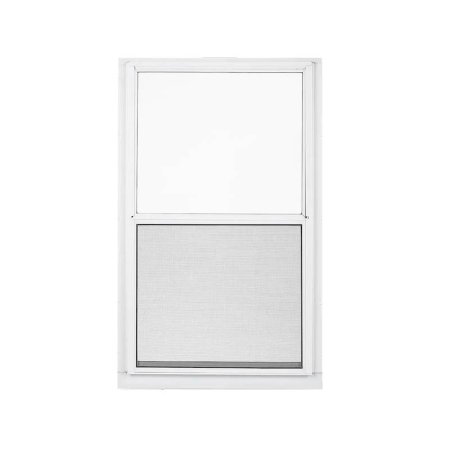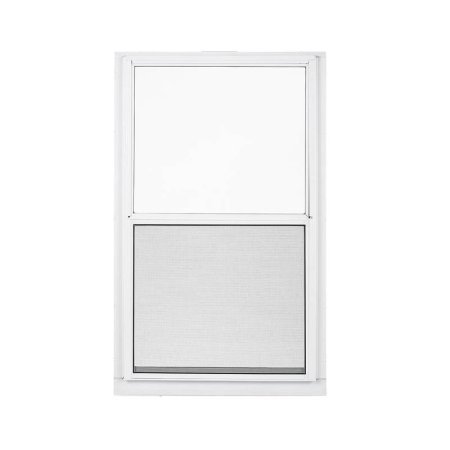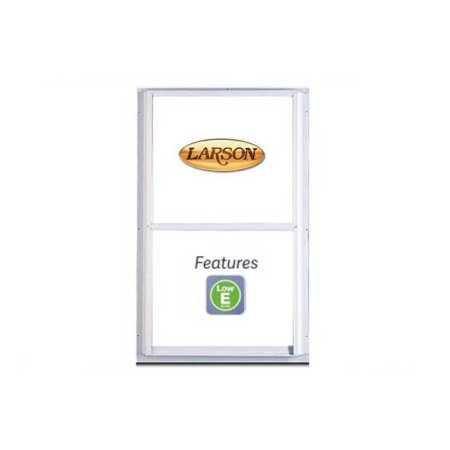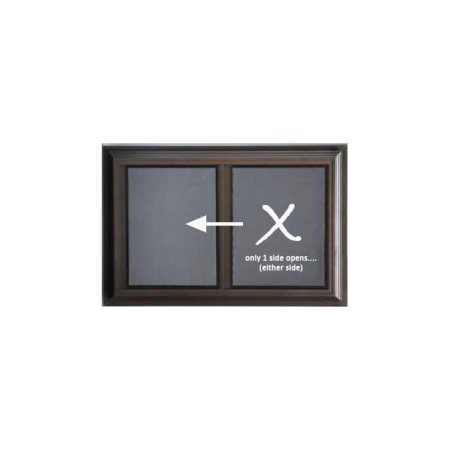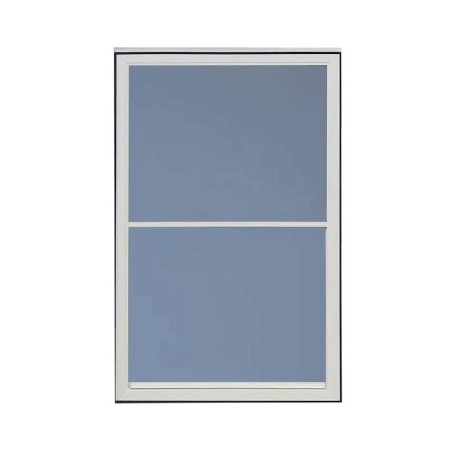
We may earn revenue from the products available on this page and participate in affiliate programs. Learn More ›
Homes with older, poorly insulated windows can face colossal energy bills in the cold- and hot-weather seasons. While replacement windows are an option, this route can be costly. A more cost-effective way of improving the energy efficiency of a home is by installing storm windows.
The best storm windows add an extra pane of glass over an existing window, increasing energy efficiency and cutting heating and cooling costs by as much as a third. Storm windows are also easy for DIYers to install themselves, saving costly installation fees. Storm windows come in versatile two- and three-track types for conventional windows as well as models that open horizontally for slider windows.
This guide will examine which factors are important to consider when shopping for storm windows and review some of the best storm window options on the market.
- BEST OVERALL: LARSON Performance Low-E Aluminum White Window
- BEST BANG FOR THE BUCK: LARSON 2-Track Single Hung Aluminum Storm Window
- BEST TRIPLE-TRACK: LARSON PERFORMANCE DOUBLE HUNG 3-TRACK STORM WINDOW
- BEST SLIDING: Affordable Storm Windows Triple-Track 2-Lite Slider
- BEST BASEMENT: Affordable Storm Windows Two-Track 2-Lite Slider
- BEST INTERIOR: LARSON comfortSEAL Double Strength Aluminum Window
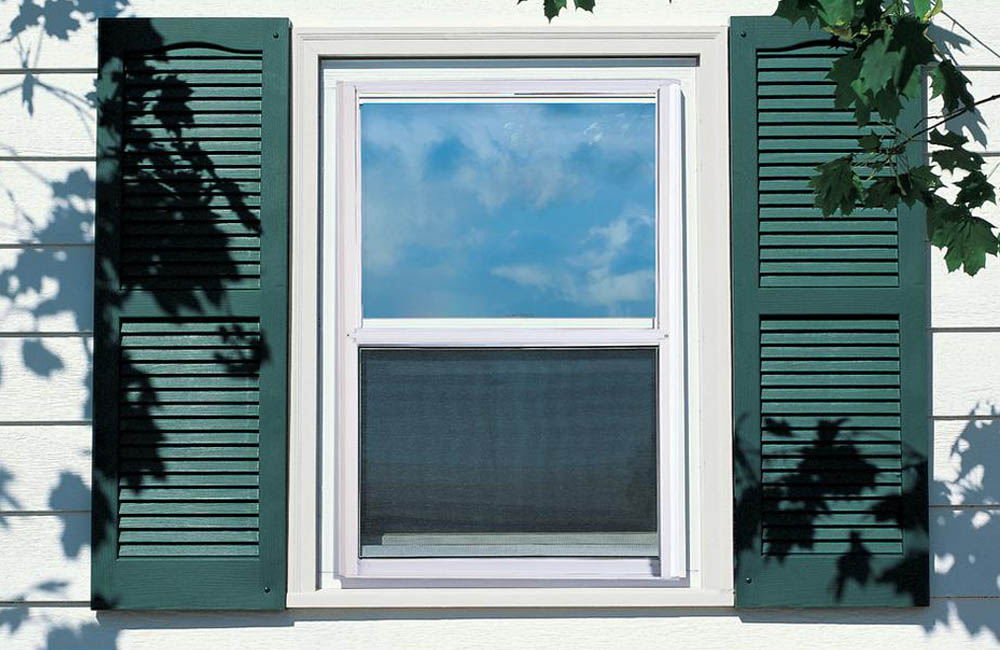
What to Consider When Choosing the Best Storm Windows
While buying a storm window with the right dimensions to fit the existing window is crucial, other factors are also important to consider, including frame and panel material, security features, and interior or exterior windows.
Dimensions
Purchasing a storm window that fits properly is critical. To measure for a storm window accurately, take measurements from the inside of the molding on one side of the window to the inside of the molding on the other side of the window. Measure from the bottom, middle, and top of the window, and use the narrower measurement.
Conduct the same measurements for the height, measuring from the inside of the molding at the top to the inside of the molding at the bottom. Measure on the left, middle, and right sides of the opening, and take the smallest measurement.
Exterior vs. Interior
Both exterior and interior storm windows are effective at improving a window’s energy efficiency and even reducing outside noises. Exterior storm windows are more efficient at insulating a home while preventing drafts. Since they are installed on the exterior of the house, they can sometimes negatively affect a home’s aesthetics by obscuring sashes, shutters, and other details that add to a home’s character.
Interior storm windows, in comparison, are easier to install, as they attach to the interior of the window as opposed to the exterior of the house. This ease of installation makes them popular options for second-story windows on homes and apartments and condos on upper floors. Since they’re not exposed to the elements, they require less maintenance than exterior storm windows and are not visible from the outside of the home.
Configuration
Storm windows come in several configurations, including two-track, triple-track, two-track sliders, and basement storm windows. With a two-track slider, the outer track has a screen on the lower half of the windows and a pane of glass on the upper half. The inside track includes a half-pane of glass that the user can raise or lower to allow air to enter through the screen on the outer track.
A triple-track storm window features two window panes and a half-screen on three separate tracks. This extra track allows the user to configure the panes and screen for ventilation from the top or bottom of the window.
A good two-track or three-track storm window should have a removable glass and screen for easy cleaning as well as some stops on the inside track that allow the user to raise the window to various heights.
A two-track slider works similarly to a two-track storm window with multiple tracks. This type of storm window opens horizontally as opposed to vertically, making it suitable for slider windows.
Basement storm windows consist of a single pane of glass that covers the window. The pane does not open and close and is held in place. Some feature a built-in screen that remains in place when the glass pane is removed to prevent bugs from entering the basement.
Frame and Panel Material
Storm windows come in wood, aluminum, and vinyl frames.
- Vinyl is the most affordable frame and is typically about half the cost of more expensive wood frames. They’re also the most energy-efficient, with a greater ability to trap air, and they don’t need the maintenance that wood frames require.
- Wood storm windows are one of the most attractive options. They look the most like real windows and can be painted or stained to match a house’s color scheme. They also offer the least amount of versatility. Most wood storm windows cannot open or close. They consist of fixed panes in a wood frame and require the most maintenance, as they periodically require repainting.
- Aluminum, like vinyl, is relatively inexpensive and requires little maintenance. Aluminum frames are not as efficient as vinyl, as aluminum conducts heat or cold. They also tend to collect condensation, which can lead to mold growth.
In addition to different frame materials, storm windows come in either glass or acrylic panes. Unlike most hurricane shutters, storm windows are translucent, so visibility is a factor. Glass offers better visibility and lasts longer than acrylic panes, but glass is heavier and more fragile. While plexiglass will not break as easily, it can scratch more easily. Acrylic filters out UV light but can be prone to yellowing.
Security
Most storm windows feature a locking system integrated into the frame of the window that consists of spring-loaded tabs that lock the pane into the frame. The user must pull both tabs inward simultaneously to release the pane to open or close it. When the pane is in place, the tabs snap into the frame, preventing the window or screen from being opened or closed. Since the tabs are accessible only from inside the window or screen, they serve as a security feature, preventing the window from being opened or closed from the outside.
Additional Features
Like storm doors, many storm windows offer features that improve their efficiency. Storm windows have panes with low emissive (Low-E) glass. Low-E glass has a metal coating that reflects heat while remaining translucent. These coatings reduce energy consumption by blocking out infrared rays and save furnishings and flooring by blocking UV rays. Storm windows also come in various colors to suit different exteriors, with white, brown, and silver being the most predominant options.
Installation
Storm window installation or replacement is one of the easier home improvement projects, requiring only a few simple tools, including a screwdriver, screws, caulk gun, and putty knife. Before installing the storm window, apply caulk around the rim of the storm window’s flange. The caulk will help create an airtight seal that prevents air from passing between the sash and the storm window frame.
When installing the storm window, hold the frame in place over the window, making sure to center the storm window over the window.
Once the storm window is centered, attach the window to the sash using the predrilled holes in the storm window’s flange. Drill pilot holes for each screw hole if necessary, then attach the storm window to the window sash using a power drill or screwdriver.
Our Top Picks
The list below narrows the field to some of the best storm windows on the market based on efficiency, durability, and quality. Any of the storm windows below will help make a home more energy efficient.
Best Overall
LARSON Performance Low-E Aluminum White Window
With their use of high-efficiency glass and their quality construction, these storm windows are well suited for improving the efficiency of a home’s windows. These windows feature Low-E glass, which helps prevent infrared light from entering the house, keeping heat in the house in the cooler weather and hot air out of the house in the hot weather. This translates to a higher level of energy efficiency than standard storm windows.
These windows also include an additional insulating layer that reduces drafts by as much as 40 percent over an existing window. A half screen allows for ventilation during warmer months, while a bottom expander adjusts to create a tight fit in the window. Both the glass and screen are removable for easy cleaning.
Best Bang for the Buck
LARSON 2-Track Single Hung Aluminum Storm Window
Low-E glass and features that help reduce outside noise and eliminate drafts make this affordable storm window from LARSON a great alternative to replacement windows. Low-E glass helps improve energy efficiency in the home by up to 60 percent, while weatherstripping between the panes helps to reduce drafts, preventing heat loss in the cold weather or heat from entering during the hot weather.
This two-track window features a half screen for ventilation and a bottom that can expand to create a tight fit on the window opening. This model is available in various sizes, including 28 inch by 39 inch, 32 inch by 39 inch, 28 inch by 55 inch, and 32 inch by 63 inch. A self-latching lock that is accessible only from inside the window adds extra security.
Best Triple-Track
LARSON PERFORMANCE DOUBLE HUNG 3-TRACK STORM WINDOW
This window offers the versatility of a three-track system with the high performance of Low-E glass. As with other three-track systems, this storm window includes a track with two removable screens and a first and second track with panes that slide up or down. This extra track allows the user to set the window for ventilation from either the top or bottom of the window.
With Low-E glass, these windows will cut energy loss by up to 60 percent, helping to keep it warmer in the cold weather and cooler in the hot weather while also blocking out harmful UV rays that can damage furnishings and flooring. LARSON’s three-track windows come in three color options, including white, brown, and metal. Size options range from 14.5 to 44 inches for width and 25.5 to 75 inches in height.
Best Sliding
Affordable Storm Windows Triple-Track 2-Lite Slider
Windows that slide open horizontally require a storm window that does the same. This triple-track model adds efficiency to sliding windows with ⅛-inch-thick glass. This window includes Microban weatherstripping between the connection of the frame and the window sash to create a tighter seal that protects against mildew, mold, and pollen. Nylon sash locks integrated into the frame ensure all glass and screen inserts lock into place, resisting force entry from the external side of the window.
A rubber gasket that surrounds the perimeter of the flange prevents air from passing through for better energy efficiency. These slider storm windows are available in widths ranging from 20 to 31 inches and heights ranging from 12 to 60 inches. Frame color options include white, tan, and bronze.
Best Basement
Affordable Storm Windows Two-Track 2-Lite Slider
This two-track slider window offers plenty of size options, making it ideal for irregularly shaped basement windows. Size options range from 20 to 90 inches for width and 12 to 60 inches for height. The two-track system opens on one side, allowing for ventilation into the basement area. A screen insert prevents bugs from getting in.
As with other Affordable Storm Window models, this window features its Aller-Guard 100 with Microban weatherstripping around the perimeter of the frame, creating a seal that resists mold, mildew, and pollen. A flexible gasket around the mounting flange prevents heat from entering or exiting, and nylon sash locks ensure the glass and screen inserts cannot be forced out.
Best Interior
LARSON comfortSEAL Double Strength Aluminum Window
With its comfortSEAL technology, this LARSON window provides some of the best protection from drafts of any storm window on the market. These storm windows, which install inside the window jamb, reduce air leakage by as much as 75 percent and also have the added benefit of reducing noise from outside the home by as much as 50 percent.
A hinge at the top of the storm window allows it to be opened, making for easy cleaning between the windows. Installation can be completed in minutes with a few screws, making attaching and removing the window between seasons easy. This window comes in 52.875-inch height and sizes that fit opening widths of 32.25 inches, 28.25 inches, and 36.25 inches. This window requires a depth of 1.5 inches outside the window jamb for installation.
FAQs About Storm Windows
If you’re wondering how to best insulate or maintain a storm window, then read on for answers to these and other commonly asked questions about storm windows.
Q. How do I insulate a storm window?
When installing a storm window, use caulk between the storm windows’ flange and the window sash to ensure a tight seal that won’t allow cold air to enter.
Q. Should I add caulk around my storm windows?
Using caulk to provide an airtight seal around storm windows is an excellent way to improve their efficiency; however, keep in mind this makes them a more permanent addition to a home. Don’t caulk around the storm windows if you plan on removing them from the windows during warmer months.
Q. How do I maintain storm windows?
Clean storm windows regularly to ensure they’ll last a long time. About once a year, remove the internal and external glass panes and screens and clean them using soapy water and glass cleaner. While the panes are out of the frame, remove debris that collects in the storm window sills with a shop vac, then wipe down the sills with a damp cloth for a thorough cleaning.



